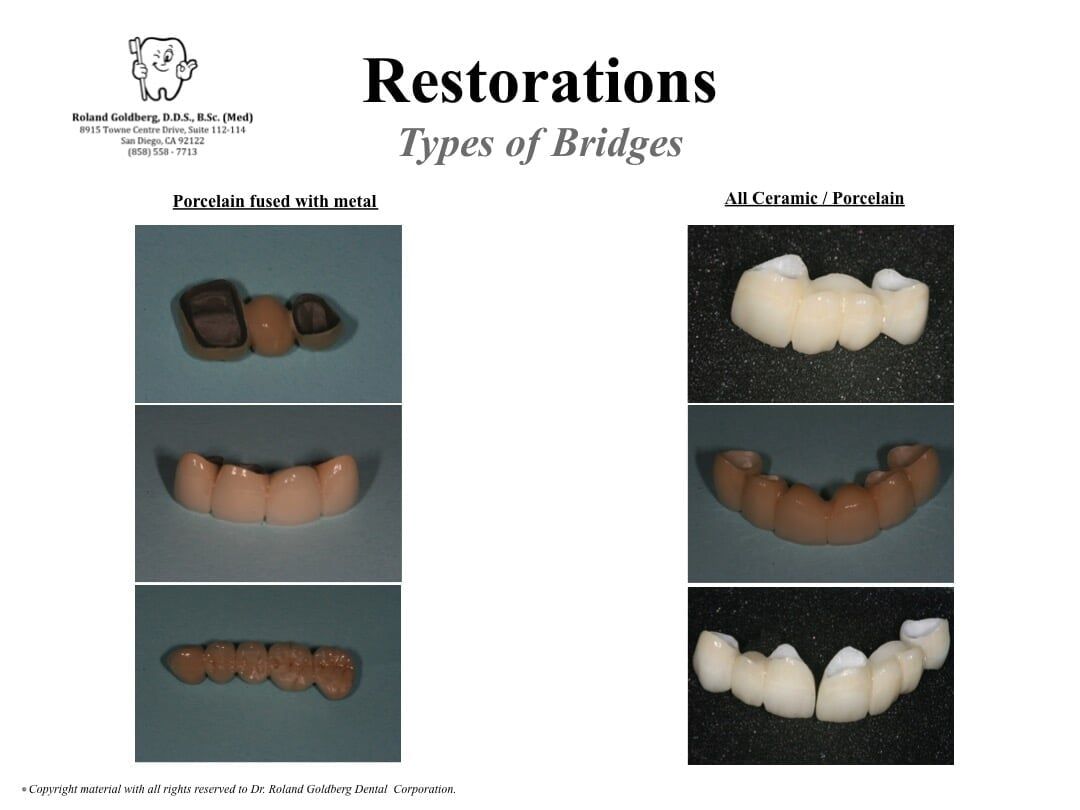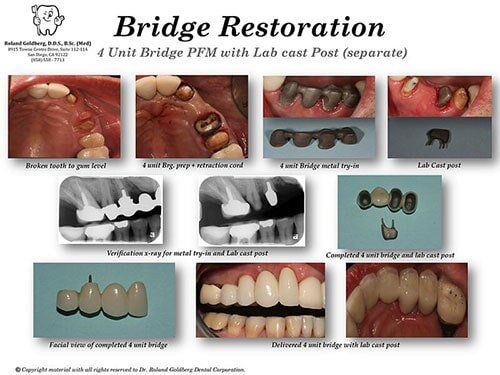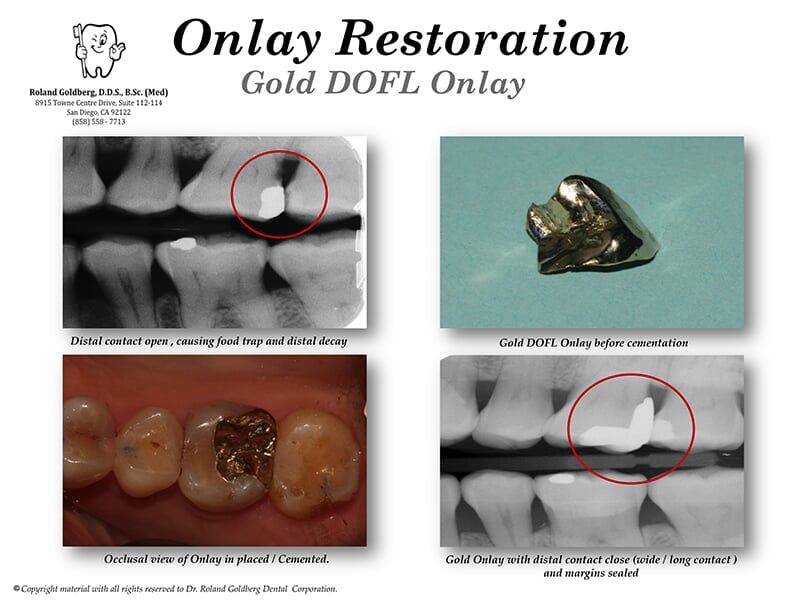BRIDGES
Unfortunately, sometimes we lose teeth. However, we live in an age now where there are multiple options to replace lost teeth. It is important to consider replacement of missing teeth because beside the obvious aesthetic disadvantages, missing teeth can cause structural changes to your mouth and jaw, making it difficult to speak or chew properly.
Dental bridges are a great way to replace missing teeth. Existing neighboring teeth are used as anchors, or abutments, for the bridge, which spans the area where your tooth is missing. Bridges can be made from gold, metal, metal alloys, porcelain, or composite to ensure that they are strong and durable.
The process of creating a bridge begins by recontouring your existing teeth
to create abutments, or anchors, to which the bridge will be attached. After the abutments have been prepared, a mold is taken of the area and sent to one of our artisan dental labs. Our phenomenal lab technicians use the mold to fabricate a bridge that looks exceptional, fits properly and feels as close to your natural teeth as possible.
Here are some before and after photos of beautiful bridges that we have offered in our office.
During the period in which our lab technicians skillfully craft your permanent bridge, we will make you a temporary bridge to wear until the final restoration is ready. The temporary protects the abutments and the exposed gum areas and looks better than a missing tooth. Once the permanent bridge is ready, it is cemented onto the abutments to give you a functional, beautiful smile!
- Avoid eating sticky and hard foods.
- Gentle care should be taken when you floss.
- PULL THROUGH THE CONTACT — DO NOT FLOSS UP AND DOWN, BECAUSE YOU MAY LOOSEN THE TEMPORARY CROWN. The temporary crown must be in place during the period between the initial preparation and the cementing of the permanent crown.
- If your temporary crown comes off or breaks, please call the office immediately for further instructions.
- If the acrylic temporary crown does come off and you CANNOT come into the office, you can reseat it on the tooth yourself using any denture adhesive or temporary cement found at your local pharmacy.
POSSIBLE COMPLICATIONS FROM CROWN PREPARATION
- Sore gum tissue
- Occlusion too high
- Sensitivity to hot, cold, and air. Refrain from eating hot and cold foods.
- If you were told that the decay was close to the nerve and you are experiencing EXTREME or SPONTANEOUS PAIN (i.e. not being able to sleep or severe throbbing pain), please call the office to come in as soon as possible.
- IF YOU DO NOT KEEP THE TEMPORARY CROWN IN PLACE UNTIL YOUR PERMANENT CROWN IS PLACED, YOUR TEETH MAY SHIFT AND THE PERMANENT CROWN MAY NOT FIT PROPERLY.
Sometimes, decay invades the tooth so much that there isn’t enough space between the crown and the jaw bone in order to properly adapt the new beautiful crown. By surgically removing a little bit of bone around the tooth, we lengthen the span of the crown in a procedure called “Crown lengthening”. Crown Lengthening is done for restorative reasons, but can also be used to improve the beauty of your gum line.
Sometimes crown lengthening and/or gingivoplasty is performed to improve a “gummy” smile, where the teeth appear short. The teeth may actually be the proper length, but excess bone or gum tissue may be covering them. Excess gum and bone tissue is again removed and reshaped to expose more of the natural tooth.
Sometimes crown lengthening and/or gingivoplasty is performed to improve a “gummy” smile, where the teeth appear short. The teeth may actually be the proper length, but excess bone or gum tissue may be covering them. Excess gum and bone tissue is again removed and reshaped to expose more of the natural tooth.
Inlays and onlays are often referred to as partial crowns. Sometimes, when a cavity is too big to be restored with filling material like composite or amalgam, a lab crafted inlay or onlay should be used to restore the tooth. Inlays and onlays are used to strengthen the tooth, restore its shape,
and prevent further damage. An inlay is used when there is no damage to the cusps of the tooth, and the inlay can be placed right into the tooth. On the other hand, when the decay is more extensive and a cusp is involved, an onlay is used to cover parts of the cusp tips.
First, the decayed, bacteria-laden areas of the tooth are removed, just like a normal filling. Dr. Goldberg will carefully prepare the tooth surface to specific dimensions and then take an impression of the preparation to be sent to one of our artisan dental labs. A temporary inlay/onlay will be made so that you can still carefully chew on that area.
The lab then sculpts a restoration made from porcelain, gold, or a composite resin. Once completed, Dr. Goldberg
will ask you to return for a final insertion appointment. During that follow-up visit, the inlay or onlay is cemented in place. Your tooth will look and feel better than ever!








